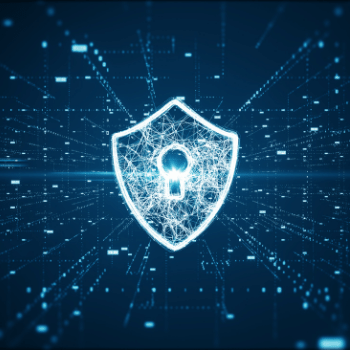Learn about cybersecurity market trends and forecasts for 2022
 Another year has passed, and although 2021 is considered by many as a “2020 part two”, due to the unfolding of the new coronavirus (SARS-CoV2) pandemic, the situation seems to have improved considerably and most commercial sectors are warming up again.
Another year has passed, and although 2021 is considered by many as a “2020 part two”, due to the unfolding of the new coronavirus (SARS-CoV2) pandemic, the situation seems to have improved considerably and most commercial sectors are warming up again.
Of course, the remarkable changes that have taken place in our society due to the crisis have also had reflections on the information security market. With the digitizing of many services and people’s greater contact with technological innovations, online fraud has skyrocketed. Nevertheless, cybercrime has focused on digital hijackings — also known as ransomware — to pressure companies that depend on the Internet to operate. Many gangs have been successful in this endeavor.
Now, moving into 2022, there is an even greater expectation of returning to normal. And the cybersecurity market? What will the main trends on the market be for this new year? What challenges will we face and what mindset should cybersecurity professionals adopt for the new year? Fortunately, although the threats and risks are still a concern, there is some good news to reassure us a bit.
Increasingly sophisticated attacks
Ask any expert: It is undeniable that in 2022 we will witness even more attacks on supply chains and critical infrastructures. Cybercrime has realized that it is much more profitable to target primary suppliers than other corporations that make up a commercial ecosystem, as this generates a “snowball” effect, making it much more difficult to resume normal operations. Such attacks may include ransomware (which is becoming increasingly sophisticated) and silent intrusions.
Another sector we should be concerned with is the Internet of Things (IoT). Businesses and end users are adopting a growing number of smart devices that do not have a software standard and may contain structural security flaws, as well as be vulnerable to misconfiguration. With the imminent arrival of 5G, these devices start forming a machine-to-machine (M2M) network that makes the attack surface larger, since it eliminates intermediate Wi-Fi points.
This means sensors, self-driving cars, personal assistants, smart locks, and other devices will be even more exposed on the web. For companies, the challenge will be to map these assets and to properly manage their protection; for end users, it's doing the homework of learning to buy only quality products (that don't leave the factory with silly vulnerabilities, such as no encrypted communication with your server) and to configure them properly.
Don't worry, we’ve got good news!
As we said, while such trends can be scary, there is a positive outlook that balances out the scenario for 2022. Fortunately, companies are finally recognizing that cybersecurity is not just “an IT team thing”. The board and C-level executives are increasingly involved with the subject, which is great news for managers in the cybersecurity field. This means more investments in more robust solutions and greater infrastructure protection.
And speaking of security solutions, these are expected to become increasingly automated with the help of artificial intelligence and machine learning. It is worth mentioning that the use of artificial intelligence in security solutions does not replace human collaborators, but it does help facilitate and optimize our workflows!
Ultimately, 2022 should bring even more cybersecurity awareness to end users — both within corporations and beyond. Society at large is beginning to understand the importance of being careful on the web and becoming aware of their digital rights. Increasingly refined specialist media coverage should contribute to increase awareness regarding online threats.
